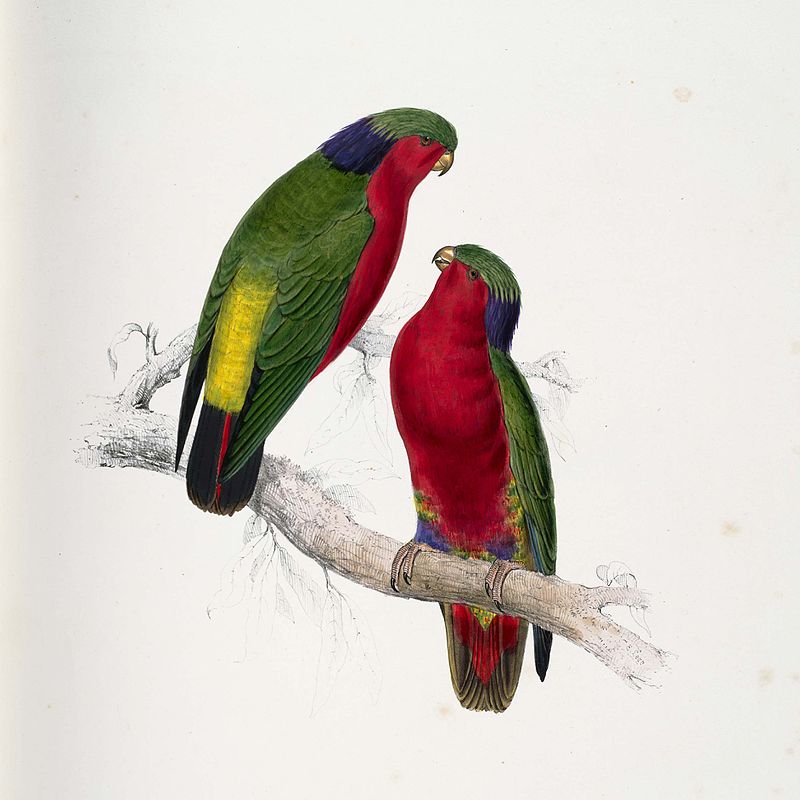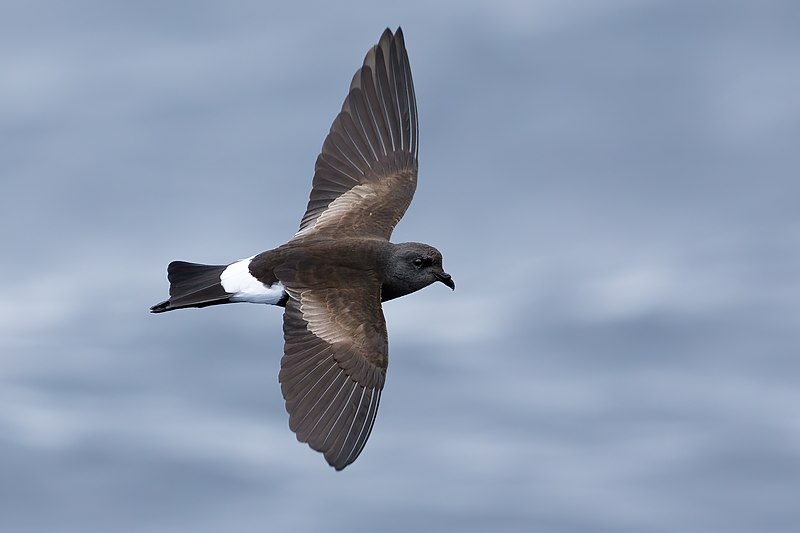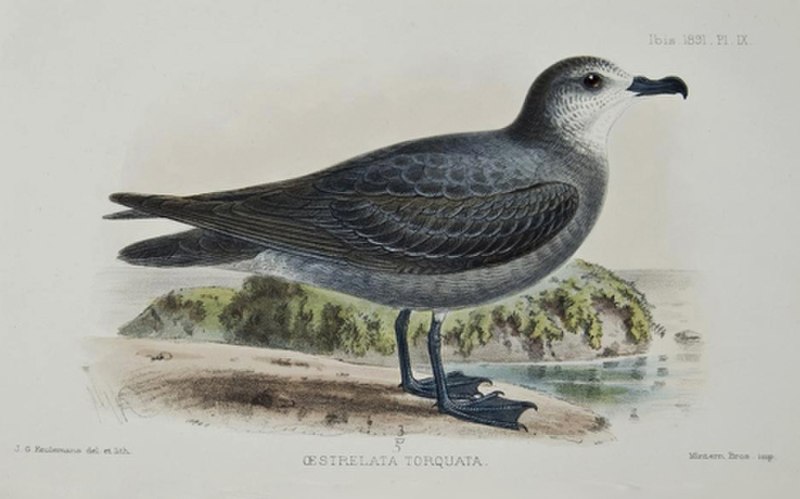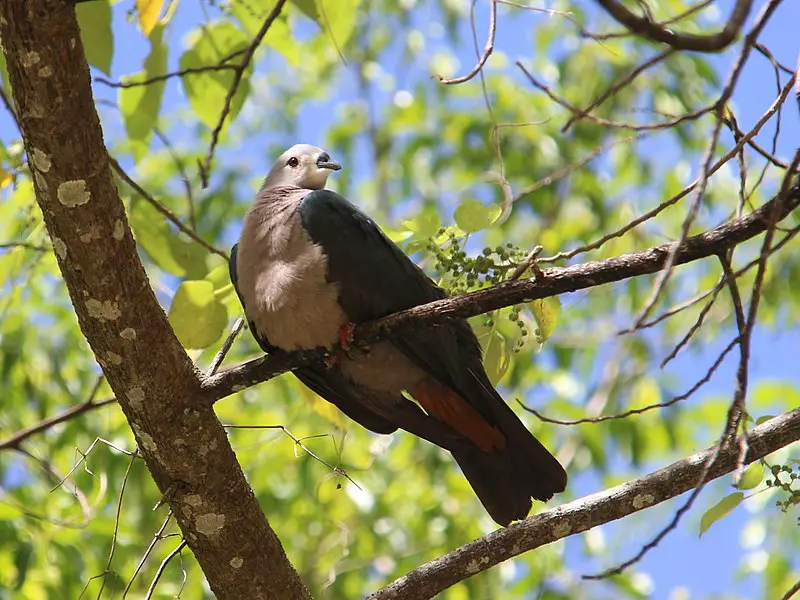Kiribati is an island country located in the Pacific Ocean. It is home to a wide variety of birds, many of which are endemic to the area. From colorful parrots to rare seabirds, Kiribati provides a unique opportunity to observe some of the most captivating birds in the world.
The diverse avifauna of Kiribati has been a source of fascination to birders and wildlife enthusiasts for many years, and there is still much to be uncovered in this part of the world.
This article will explore the different species of birds that call Kiribati home, as well as their habits and habitats.
1. Kuhl’s Lorikeet

Kuhl’s lorikeet, also known as the Rimitara Lorikeet or Kura, is a species of colorful parrot native to islands across the South Pacific.
It was first discovered by German ornithologist Heinrich Kuhl in 1824 and subsequently named after him.
The bird has an array of vibrant colors that range from dark green on its back to yellowish-green underparts with bright orange markings on its head, wings and tail feathers.
Its diet consists mainly of nectar, pollen and fruits found in tropical areas such as palm trees and flowering shrubs.
Due to their friendly nature they have become popular pets amongst many people around the world who appreciate them for their intelligence and beautiful plumage.Scientific classification:
| Kingdom | Animalia |
| Phylum | Chordata |
| Class | Aves |
| Order | Psittaciformes |
| Family | Psittaculidae |
| Genus | Vini |
| Species | V. kuhlii |
Also Featured In: Birds that Live in Tahiti Island,
2. Pacific Long-Tailed Cuckoo

The Pacific long-tailed cuckoo is a species of bird from the Cuculidae family. It is found only in New Zealand, where it breeds during spring and summer before migrating to various Pacific islands for its winter season.
This bird has many names such as sparrow hawk, home owl, screecher or koekoeā in Māori.
The most distinctive feature about this species are their elongated tails which can measure up to 16 cm long.
They are also brood parasites meaning they will lay eggs in other birds’ nests then rely on them to raise their young without any parental help from themselves.
Despite these traits however, they still make beautiful additions to our avian population with their melodious calls that echo through the forests each morning and night.Scientific classification:
| Kingdom | Animalia |
| Phylum | Chordata |
| Class | Aves |
| Order | Cuculiformes |
| Family | Cuculidae |
| Genus | Urodynamis Vigors & Horsfield, 1826 |
| Species | U. taitensis |
Also Featured In: Common Republic of Nauru Birds,
3. Wilson’s Storm Petrel

Wilson’s storm petrel is a small seabird of the Oceanitidae family. A circumpolar species, it can be found in both northern and southern hemispheres during summertime.
It has an abundance population estimated to be around 20 million birds as of 2022 making it one of the most populous bird species on Earth.
This nocturnal creature loves to feed on crustaceans, fish eggs and larval fishes that they catch while flying at night over open waters near coasts or islands.
During daylight hours Wilson’s Storm Petrel will rest in large groups and form colonies with fellow members for protection against predators like gulls and skuas which steal their food supplies if given opportunity.Scientific classification:
| Kingdom | Animalia |
| Phylum | Chordata |
| Class | Aves |
| Order | Procellariiformes |
| Family | Oceanitidae |
| Genus | Oceanites |
| Species | O. oceanicus |
4. Phoenix Petrel
The Phoenix petrel is a beautiful seabird native to the central Pacific Ocean. It has dark brown upperparts and white below, with a whitish throat. Measuring up to 35 cm long, it has an impressive wingspan of 83 cm.
The sexes are similar in appearance and behave alike when breeding at their colonies on Phoenix, Tonga, Kiritimati and Tuam Islands.
They forage for food over open ocean waters during the day but come together each night to roost on nearby islands or coastal areas close by their nesting grounds.
The species feeds mainly on squid and fish which they find while flying low over the sea surface in search of prey items.
A fascinating bird that can be seen skimming along wave tops searching for its next meal.Scientific classification:
| Kingdom | Animalia |
| Phylum | Chordata |
| Class | Aves |
| Order | Procellariiformes |
| Family | Procellariidae |
| Genus | Pterodroma |
| Species | P. alba |
Also Featured In: Beautiful Birds Found in Pitcairn Islands,
5. Greater Crested Tern

The Greater crested tern is a large bird of the family Laridae, found in tropical and subtropical regions across the Old World.
It has five subspecies which breed from South Africa to Australia, before migrating away for winter.
The distinctive crest feathers on its head give it its name and set it apart from other species like gulls or skuas.
They have wide wingspans that allow them to fly swiftly over oceans or coasts with ease – they are known as swift terns because of this.
The greater crested tern feeds mainly off fish caught at sea by plunge-diving into waters up to 10m deep; an impressive feat indeed.
With their bright white plumage, black caps and long yellow bills they stand out against any landscape – even on land these birds can be seen enjoying life along coastlines.Scientific classification:
| Kingdom | Animalia |
| Phylum | Chordata |
| Class | Aves |
| Order | Charadriiformes |
| Family | Laridae |
| Genus | Thalasseus |
| Species | T. bergii |
6. Cook’s Petrel

Cook’s petrel is a Procellariform seabird, belonging to the gadfly petrels and part of the Cookilaria subgroup.
It stands out amongst its peers due to its small size; typically 25-30 cm long with a wingspan of 65-66 cm and weighing approximately 200 g.
Its plumage is predominantly dark grey in colour which contrasts sharply against its bright blue feet – earning it another name: ‘blue footed petrel’.
Despite being one of the smallest species within this group, Cook’s Petrel can travel vast distances over open ocean waters using an advanced navigation system that helps them find food sources located thousands of kilometres away from their nesting grounds.Scientific classification:
| Kingdom | Animalia |
| Phylum | Chordata |
| Class | Aves |
| Order | Procellariiformes |
| Family | Procellariidae |
| Genus | Pterodroma |
| Species | P. cookii |
7. Red-Tailed Tropicbird

The Red-tailed Tropicbird is an exotic seabird found in tropical areas of the Indian and Pacific Oceans. It has a striking appearance, with mostly white feathers and a black mask covering its eyes.
Its bill is bright red, making it stand out against its pale plumage. Both males and females have similar looks to one another – unlike many other birds species where the male looks significantly different from that of the female.
Described by Pieter Boddaert in 1783, this impressive bird can be seen soaring through tropical skies looking for food either alone or within small flocks made up of several individuals at once.Scientific classification:
| Kingdom | Animalia |
| Phylum | Chordata |
| Class | Aves |
| Order | Phaethontiformes |
| Family | Phaethontidae |
| Genus | Phaethon |
| Species | P. rubricauda |
8. Collared Petrel

The Collared Petrel is a species of seabird belonging to the Procellariidae family. It can be found in Fiji, where it breeds on Gau Island and possibly other islands, as well as potentially breeding in Vanuatu, Cook Islands and Solomon Islands.
Its plumage predominantly consists of greyish-brown colouring with white underparts and collar around its neck; this gives them their name ‘Collared’ petrels.
They are known to migrate over long distances out at sea during winter months before returning home for the summer season when they breed between August – April.
These birds feed primarily upon squid but also take small fish from surface waters or deeper depths depending on availability/seasonality.
Although not endangered yet conservation efforts need to continue so that these beautiful birds remain protected within our environment.Scientific classification:
| Kingdom | Animalia |
| Phylum | Chordata |
| Class | Aves |
| Order | Procellariiformes |
| Family | Procellariidae |
| Genus | Pterodroma |
| Species | P. brevipes |
9. Micronesian Imperial Pigeon

The Micronesian imperial pigeon is a bird species found in Palau, the Caroline Islands, the Marshall Islands and Nauru.
It has various habitats such as montane forests, secondary forests, beach-side forests and mangroves.
Unfortunately this beautiful creature is threatened by hunting and deforestation due to human activities. The IUCN have assessed it with “Near Threatened” status for its conservation priority levels.
This large sized bird can be seen flying around during dusk or dawn time periods in search of food like fruits from trees close by their habitat locations.
If we are able to protect its natural environment then this magnificent specie will continue living peacefully without any disturbances while appreciating nature’s beauty.Scientific classification:
| Kingdom | Animalia |
| Phylum | Chordata |
| Class | Aves |
| Order | Columbiformes |
| Family | Columbidae |
| Genus | Ducula |
| Species | D. oceanica |
10. Pacific Imperial Pigeon

The Pacific imperial pigeon is a beautiful species of bird found in many islands located throughout the South Pacific. It has an iridescent green body, white neck and head with black markings around its eyes and beak.
Its wings are reddish-brown with a large area of blue on each side near the tips. This majestic creature was formally described by Johann Friedrich Gmelin in 1788 and it can grow up to 11 inches long with a wingspan reaching 33 inches wide.
The diet of this amazing avian consists mainly of fruits like figs, mangos, breadfruit, guavas as well as seeds which they search for while flying low over forests or woodlands.
As one can imagine these birds have become very important culturally to many people living within their range due to their beauty and stunning colors.Scientific classification:
| Kingdom | Animalia |
| Phylum | Chordata |
| Class | Aves |
| Order | Columbiformes |
| Family | Columbidae |
| Genus | Ducula |
| Species | D. pacifica |
11. Mottled Petrel

The Mottled Petrel, also known as the Kōrure, is a species of seabird found in oceans around the world. It has a wingspan of 29 to 32 inches and typically measures 13-14 inches long.
This bird prefers spending its time away from land except when it needs to nest or care for young. The diet consists mainly of fish and squid with some crustaceans thrown in occasionally.
As a transquatorial migrant, they spend summer months breeding on islands off New Zealand before migrating eastward across the Pacific Ocean towards North America during winter months.
They’re not particularly shy birds but despite their prevalence little is know about them due to how rarely they come ashore making studying these creatures challenging at best.Scientific classification:
| Kingdom | Animalia |
| Phylum | Chordata |
| Class | Aves |
| Order | Procellariiformes |
| Family | Procellariidae |
| Genus | Pterodroma |
| Species | P. inexpectata |
Also Featured In: Birds You’ll Find in the Marshall Islands, Most Common Birds in Stewart Island
12. Bokikokiko

The Bokikokiko is a species of warbler found exclusively on Kiritimati and Washington Island in Kiribati.
It has an estimated population size of 2500, but this number is decreasing due to the introduction of invasive species such as pigs and rats.
The bokikokiko mainly inhabits lowland scrub forests near sea level, where it feeds on small insects like flies and beetles.
Its plumage is mostly brown with streaks of white or yellow across its back, wings and tail feathers.
Unfortunately, since their habitat is so limited they are particularly vulnerable to environmental changes that occur from human activities like deforestation or pollution.
Conservation efforts need to be taken soon if we want future generations to experience the beauty of these birds for themselves.Scientific classification:
| Kingdom | Animalia |
| Phylum | Chordata |
| Class | Aves |
| Order | Passeriformes |
| Family | Acrocephalidae |
| Genus | Acrocephalus |
| Species | A. aequinoctialis |
13. Providence Petrel

The Providence Petrel (Pterodroma solandri) is a large and heavy-bodied seabird, with an impressive wingspan of up to 1.2 metres.
It nests in two locations in the Tasman Sea – Lord Howe Island, 800 km away from the Australian mainland and Philip Island.
Unfortunately, it has been nearly wiped out on Norfolk Island due to overharvesting for food; about one million birds were taken before 1800 leading to its complete extinction there.
This species is classified as Near Threatened by IUCN’s Red List of threatened Species, yet conservation efforts are underway at both nesting sites aiming to ensure its survival for future generations.Scientific classification:
| Kingdom | Animalia |
| Phylum | Chordata |
| Class | Aves |
| Order | Procellariiformes |
| Family | Procellariidae |
| Genus | Pterodroma |
| Species | P. solandri |
14. Little White Tern

The Little white tern is a small seabird found in French Polynesia and the Republic of Kiribati. Recognized as its own species, this bird was first formally described by British ornithologist Howard Saunders back in 1876.
With an all-white body and light gray wings, it has a graceful yet elegant appearance due to their slender pointed bill and long tail feathers.
They are often seen hovering over shallow waters looking for food such as fish or insects that they can catch with their feet while flying midair.
In addition to hunting alone, these birds also form breeding colonies where up to hundreds will gather together on coral islands during mating season. These unique creatures are truly beautiful sights to behold.Scientific classification:
| Kingdom | Animalia |
| Phylum | Chordata |
| Class | Aves |
| Order | Charadriiformes |
| Family | Laridae |
| Genus | Gygis |
| Species | G. microrhyncha |